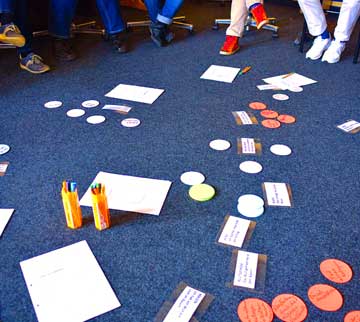
Team buildings have become part and parcel of many companies’ calendar of activities for the year. While they vary from each organization, there is a common element to most team buildings - that once-a-year event (usually held in the summer) where the company ceases majority of its operations to engage its employees in activities, to develop teamwork, collaboration and camaraderie among the company’s workforce.
Despite this, team buildings have drawn some unnecessary criticism, with some even questioning its value. But are these criticisms really valid or are these activities simply misunderstood? Below are the top three misconceptions people have about team buildings:
Misconception #1: There is no added value in the song-and-dance numbers and “silly” activities
A common misconception for team buildings lies in the belief that these activities culminate with the obligatory song-and-dance number or with silly activities like relay races, tug-of-wars, or “trust falls”. And while they are indeed recurring themes for most team-building activities, they do serve a purpose. Activities like these typically serve as good icebreakers and foster collaboration amongst colleagues, however these should not be the be-all and end-all of the team building.
According to the International Journal of Marketing and Human Resources1, to truly maximize its results, an effective team building activity, which normally includes the so-called “silly” or play-time exercises, “should be integrated with real-time work goals.” An unhealthy balance of these two elements in team building workshops may result in a failure of team building interventions and team work and structures.
Misconception #2: Team buildings are just “paid vacations”
For some organizations, team buildings have become synonymous to company-sponsored outings to beaches or resorts. And while getting some R&R is never a bad thing, companies definitely should not miss out on these outings as opportunities to further their organizational development.
A properly designed team building course can go a long way in improving your team and ultimately, meeting your organization’s goals and core competencies. After all, studies suggest that team building exercises yield a positive impact on a team’s performance and effectivity.
Misconception #3: It won’t have any lasting effect on the organization
Old habits die hard. Another long-standing myth about team buildings is that it cannot be designed to have a lasting effect on people. For many organizations, the first few days post-team building may bring about some changes, but after the “high”, people will go back to their old ways as time goes on.
But just like anything, team building is a continuous process. It is not just a one-off event and it doesn’t stop just because the team-building activities ended. Think of teamwork as a skill - it needs practice - and that the trust and understanding in a team builds gradually over time.
And that is why, in order to support the team-building process, it is necessary to do follow-up workshops after the event to fully maximize your team’s development.
---
TeamAsia Training offers credible and comprehensive skill-building, work behavior, and team building workshops through its roster of expert trainers. Email them at This email address is being protected from spambots. You need JavaScript enabled to view it. to schedule one of their trainings today.
Source:
1 http://www.iaeme.com/MasterAdmin/uploadfolder/IJMHRM_06_03_010/IJMHRM_06_03_010.pdf
